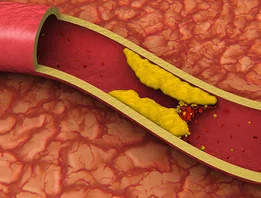


clinical research
Location, Location, Location is Key to Pancreatic Cancer Prognosis
Location, Location, Location is Key to Pancreatic Cancer Prognosis

Maen Abdelrahim, MD, PhD, B Pharm
The rates of PDAC occurrence are rising at an alarming rate with the concomitant rise in obesity and diabetes. By 2030, PDAC is expected to be the third-largest cause of cancer-related mortality globally and the second-largest cause of cancer-related mortality in the U.S., which underscores the need for research efforts toward better patient outcomes.
A Houston Methodist team, led by Maen Abdelrahim, MD, PhD, B Pharm, Director, Cockrell Center for Advanced Therapeutics and Section Chief of Gastrointestinal Medical Oncology at the Dr. Mary and Ron Neal Cancer, performed broad molecular profiling along with evaluation of the tumor immune microenvironment (TIME) of one of the largest cohorts of pancreatic ductal adenocarcinoma (PDAC) to date.

The biological criteria that established pancreatic H adenocarcinoma to a specific patient population may lead to improvements in the overall response to study immunotherapies interventions as well as giving us more accurate data on the pancreatic H adenocarcinoma responses to immunotherapies.

Maen Abdelrahim, MD, PhD, B Pharm
Associate Professor of Medicine,
Director, Cockrell Center for Advanced Therapeutics
Section Chief of Gastrointestinal Medical Oncology,
Dr. Mary and Ron Neal Cancer Center
Abdelrahim concluded that the responses to immune-oncology therapies may differ based on the location of tumor origin. The TIME and molecular profiles of PDAC of the pancreas head (H) vs. Body/Tail (B/T) were compared. In this retrospective study, Abdelrahim’s team compared 3499 PDAC samples using immunohistochemistry and next-generation sequencing of DNA and RNA. These findings point towards the potential of refinements and improvements in PDAC management. The study was recently published in the peer-reviewed journal Precision Oncology.
Anatomically, the pancreas can be divided into the uncinate process--the head, body and the tail. Pancreatic tumor prognosis differs depending on the tumor’s location of origin.
Tumors originating in the H and uncinate process are typically associated with jaundice whereas those originating in the B/T are associated with more weight loss and later presentation. Notable prognostic variables to assess PDAC progression, aggression and survival outcomes include age, gender, pathological staging and certain oncogene mutations. Interestingly, these two types of tumors also differ in embryonic origin, cell composition, blood supply, lymphatic and venous drainage, and innervation.
The chances of curing cancer are the highest when the disease is detected in the initial stages. Sadly, in most PDAC patients, the disease is detected in the late or advanced stages. The curative care options for PDAC include resection, transplantation and pancreatectomy. However, patients undergoing resection have recurrence rates as high as 91%. Here are a few noteworthy facts about PDAC that are distinct from other types of cancer:
AT A GLANCE
Facts about PDAC
In contrast to the declining trends of other cancers, the rates of occurrence and mortality associated with PDAC are on the rise.
The majority of PDAC patients are diagnosed in advanced stages of the disease owing to a lack of any diagnosable symptoms or efficient screening in the initial stages.



The five-year PDAC survival rate has not advanced beyond 10% in the past five decades.
The chances of curing cancer are the highest when the disease is detected in the initial stages. Sadly, in most PDAC patients, the disease is detected in the late or advanced stages. The curative care options for PDAC include resection, transplantation and pancreatectomy. However, patients undergoing resection have recurrence rates as high as 91%. Here are a few noteworthy facts about PDAC that are distinct from other types of cancer:
AT A GLANCE
Facts about PDAC
In contrast to the declining trends of other cancers, the rates of occurrence and mortality associated with PDAC are on the rise.
The majority of PDAC patients are diagnosed in advanced stages of the disease owing to a lack of any diagnosable symptoms or efficient screening in the initial stages.
The five-year PDAC survival rate has not advanced beyond 10% in the past five decades.
Abdelrahim demonstrated differences in gene expression profiles of immuno-oncology (IO) related genes and TIME cell distribution in PDAC samples arising in the H versus B/T. The PDAC TIME profiles are also differentially dysregulated based on the tumor site. These crucial clinically notable differences suggest that responses to IO therapies may differ in tumors arising in the H versus B/T. So far, treatment regimens for PDAC of the H and B/T are similar. However, this study could pave the way for testing if streamlining therapies based on tumor site origin would improve patient outcomes.
“This is one of the largest cohorts of PDAC tumors that has undergone extensive molecular profiling,” said Abdelrahim, Associate Professor of Medicine. Differences in immune-oncology-related gene expression and TIME cell distribution imply that PDAC resulting from the H vs. B/T may respond differently to immune-oncology therapies. The genomic profiles of H vs. B/T pancreatic tumors showed slight variations as well.”
Prospective future clinical trials that compare the TIME and molecular profiles of H and B/T tumors could potentially lead to improved treatment regimens for PDAC.
Abdelrahim added, “The biological criteria that established pancreatic H adenocarcinoma as a specific patient population might lead to improvements in the overall response to study immunotherapies interventions as well as giving us more accurate data on the pancreatic H adenocarcinoma responses to immunotherapies.”
Maen Abdelrahim, Abdullah Esmail, Anup Kasi, Nestor F Esnaola, Joanne Xiu, Yasmine Baca, Benjamin A Weinberg. Comparative molecular profiling of pancreatic ductal adenocarcinoma of the head versus body and tail. NPJ Precis Oncol. 2024 Apr 6;8(1):85. doi: 10.1038/s41698-024-00571-4.
This work was supported by the Cockrell Foundation, The William and Ella Owens Medical Research Foundation and Houston Methodist Hospital Foundation.
Abanti Chattopadhyay, PhD
September 2024
Related Articles








